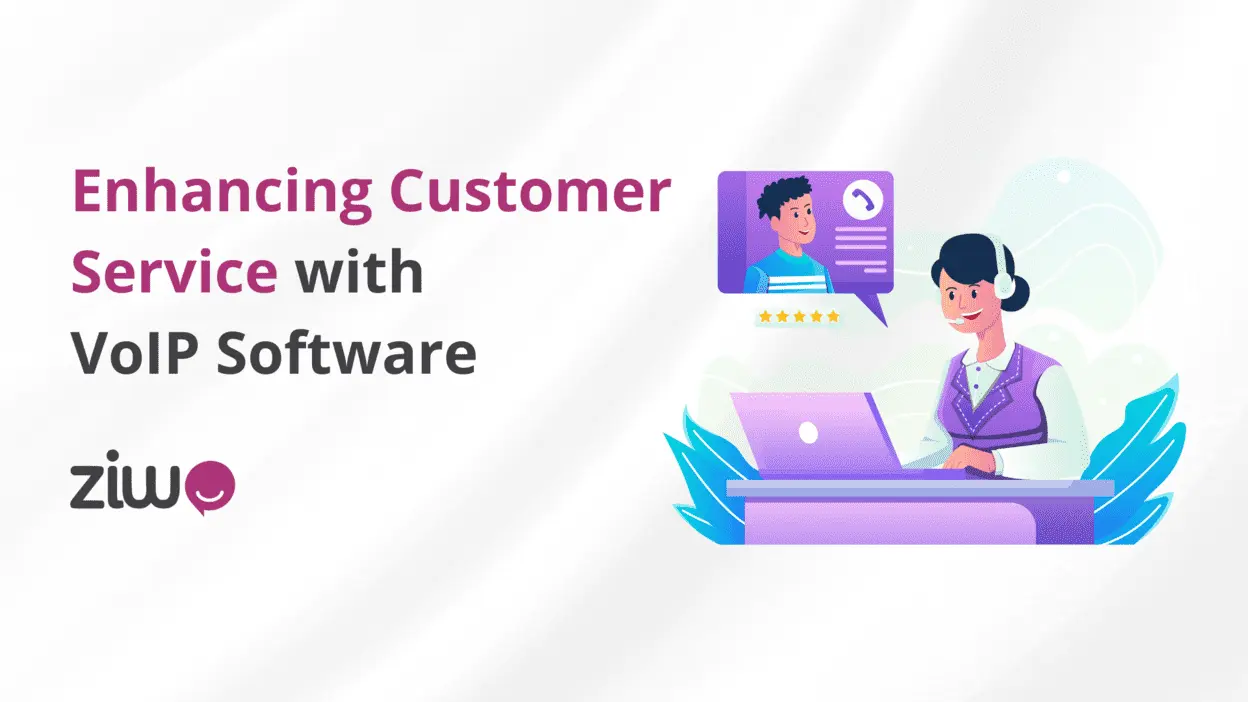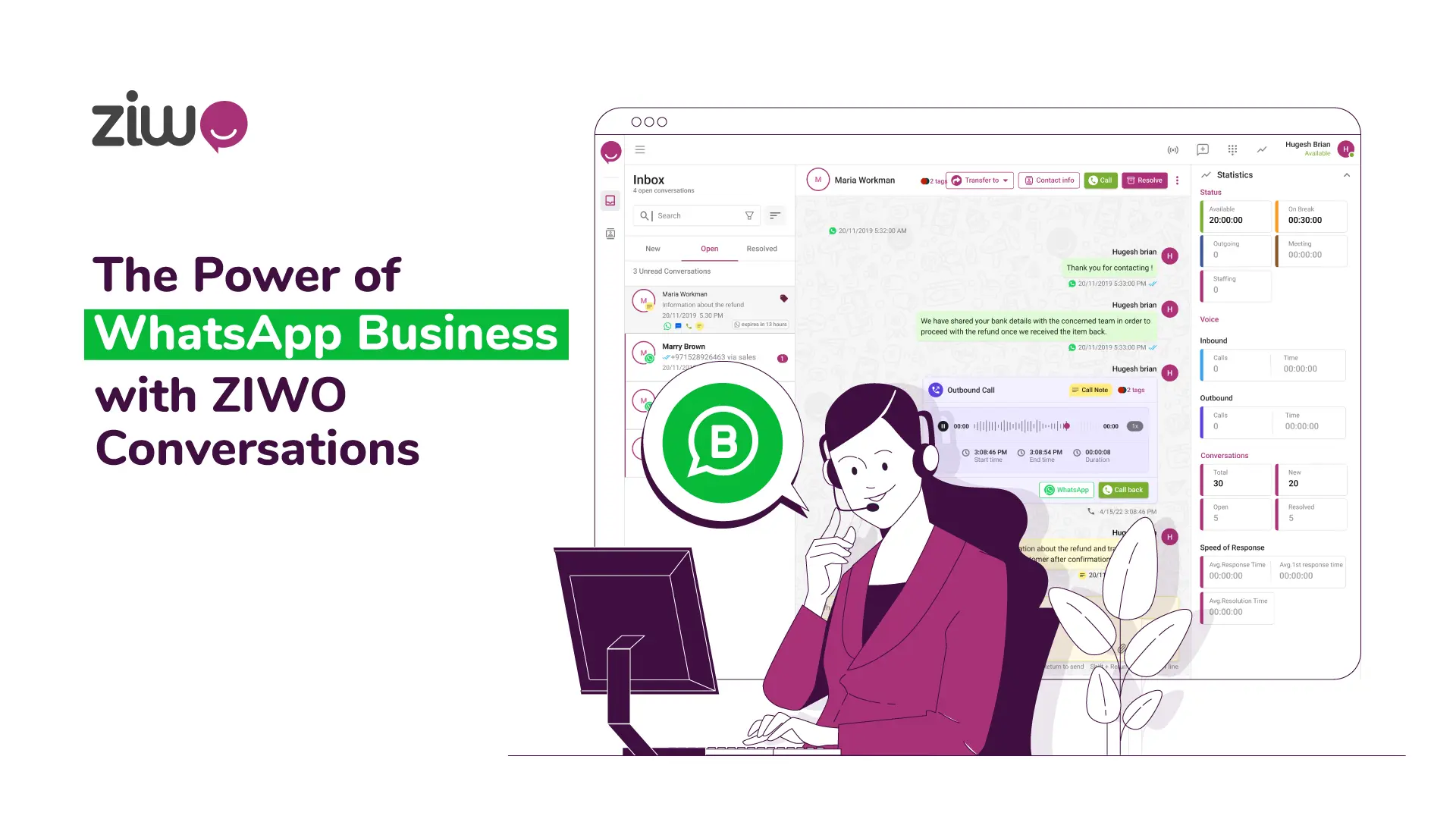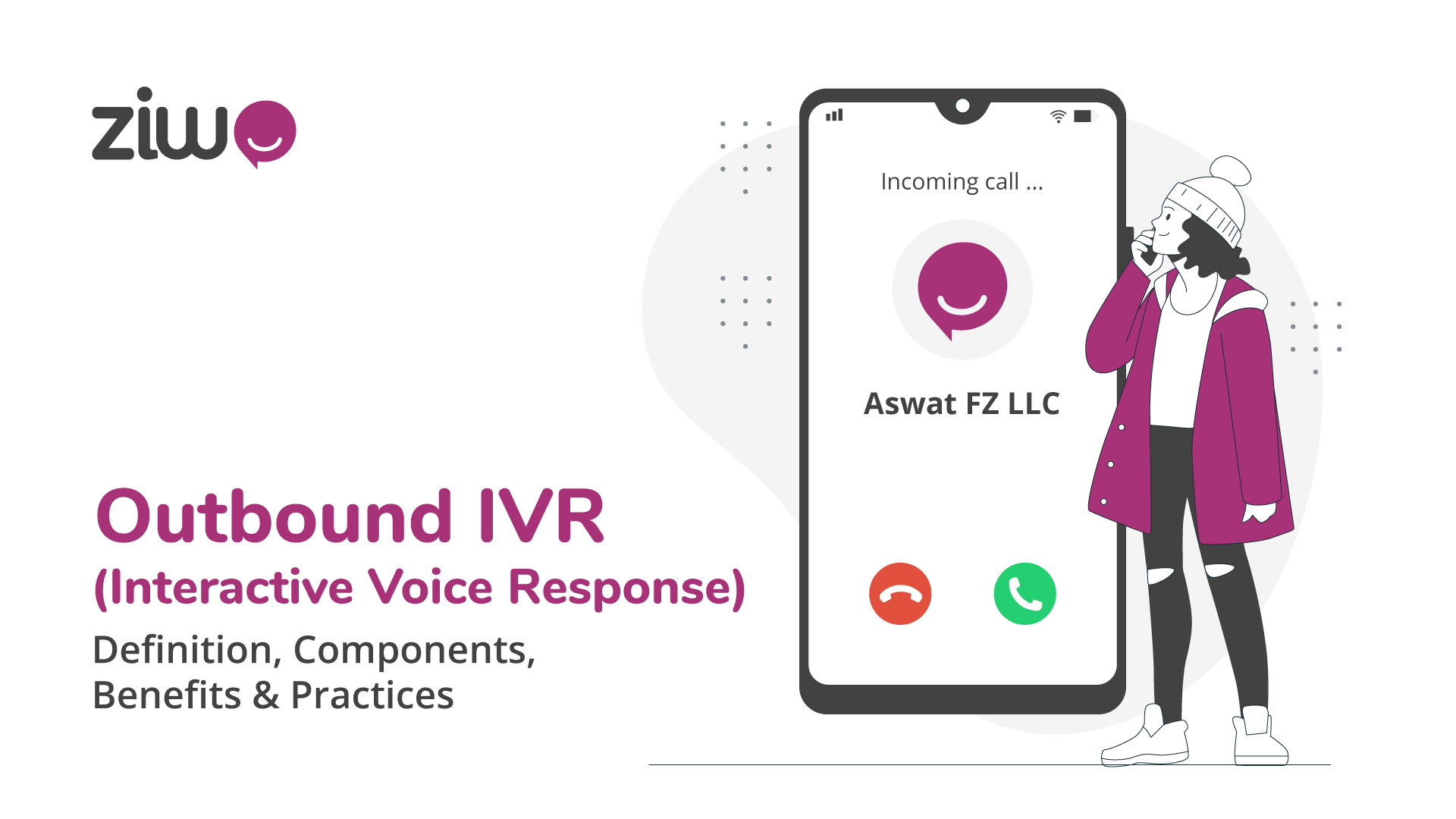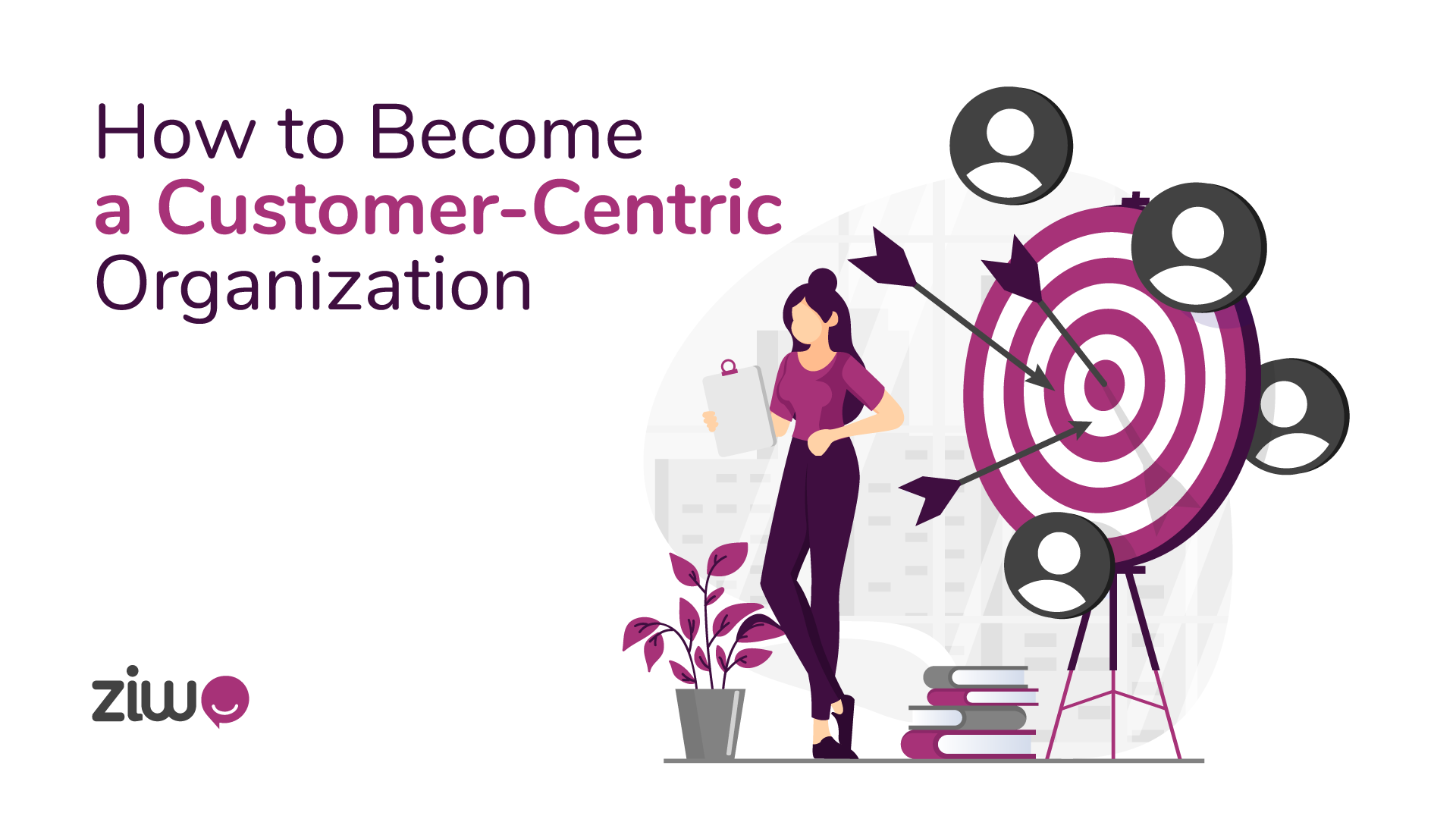
How does VoIP call center software improve customer interaction?
In contrast to conventional call center software, VoIP enables quicker responses to customers by providing smart call routings, multichannel interaction, integrating with CRM systems, offering call recordings and analytics, and allowing IVR systems.
For instance, call center automation simplifies communication channels, ensures a user-centered approach, and enables agents to offer tailor-made answers as well as high-quality customer care resulting in increased customer loyalty.
Introduction to VoIP in customer service
VoIP (Voice over Internet Protocol) shifted the way organizations communicated with their customers and allowed them to provide cheaper and more flexible callbacks1. Hence, VoIP has been a revolutionary technology in customer service.
Unlike the conventional scenario, where clients have to use landphones to communicate, VoIP systems can offer business clients a variety of channels for calling - voice communication, video calls, and instant messaging over the Internet.
With the implementation of VoIP into customer services, efficiency and the degree of customers' individualized experiences are highly improved, and operational costs are reduced, underscoring why VoIP is a cost-effective communication solution for call centers on the same footing.
Enhancing communication quality with VoIP
Based on the fact Voice over Internet Protocol is the main means that let people communicate with each other in better quality by the way of clearer audio, efficient bandwidth use, priority of voice traffic as well as echoless background.
These features facilitate an outstanding communication portal where they can either be either customer or representatives of the businesses.
Superior call quality
Digital transmission, bandwidth optimization as well as the use of modern echo cancellation methods characterize VOIP phone systems and provide them with outstanding call quality that is inaccessible to traditional phone systems.
This in turn translates into higher-quality sound and more reliable communications for callers and agents which guarantees the best voice call experience for all parties.
Reduced call drop rates
We frequently see a decline in call drop rates in Voice over Internet Protocol (VoIP) systems because of network fault tolerance, quality of service functions, bandwidth management, and network monitoring improvement.
They perform coordinatively to ensure that communication is not interrupted and that possible disruptions are prevented during calls.
VoIP and customer interaction
With VoIP, how customers interact with the business diversifies through multi-channel communication modes, enhances accessibility features, allows for customization, provides advanced options, and supports growth.
These benefits support the system to be more effective, and flexible and the customers have a good experience.
Multi-channel support
VoIP happens to be an efficient tool that affords businesses to engage with customers via many channels – voice/video calls, chats, emails, and social media4. This makes it possible for clients to choose how they wish to communicate which results in the development of such interactions that are personalized and the satisfaction of the customers.
Additionally, most VoIP platforms will centralize these channels in a unified interface reducing agents' workflow and helping them to manage each communication in one place.
Generally, the provision of cross-channel support through VoIP goes beyond this way; it increases accessibility, improves flexibility, and heightens the interaction quality.
Integration with CRM systems
The integration of CRM systems allows call center agents to immediately access relevant customer data, thereby enabling them to deal with situations in a personalized way3, and, even better, proactively solve problems.
Whereas the developments allow companies to merge communication processes and facilitate better efficiency, customer interactions become the catchwords.
VoIP features that benefit customer service
The VoIP capability that allows the employees to navigate the call routing system, provide interaction voice response, record conversations, transcribe messages to text, monitor calls in an instant, and integrate with customer relationship management enterprise system are the various benefits that assist the customer service representatives to move seamlessly during service delivery.
Utilizing these features enables one to enhance their communication processes, prevent errors, and customize the interactions positively, thus improving customer service quality in the end.
Automated call distribution (ACD)
Automated Call Distribution (ACD) assumes the topmost activity in VoIP systems2. It automatically assigns inbound calls to the most available and qualified agents or departments based on the following factors: agent availability, their skills, or the caller's preferences.
This drive is fulfilled by the ACD's automation of the process which connects the callers to the appropriate agent quickly, thus, reducing hold time, boosting customer satisfaction, and maximizing agent productivity.
Further, that is what the ACD system is famous for which includes advanced queueing and routing systems that assist the firms in managing high call numbers effectively and giving the best customer experience.
Interactive Voice Response (IVR) systems
Among the distinctive items of VoIP technology would be interacting voice response (IVR) systems that are computer programs5. These programs direct callers through menu options and pre-recorded prompts.
Automation systems are developed to handle the initial inquiries and increase productivity by cutting long queues and waiting time thereby improving customers' satisfaction. IVR systems can be customized to route calls to the right department or agent, hence cutting down on the time navigating the maze of departments and eventually allowing the customers to interact with the right agent.
Real-time analytics and reporting
Time of Events (TOE) Statistics and Reports in VoIP systems allow companies to perceive the behaviors of their call centers and customers in real-time.
These tools are helping to assemble such proactive decision-making as about the staffing level, for instance, or revealing hitherto unknown customer preferences, that would eventually increase customer satisfaction6.
Real-time reporting allows managers to track their operations staff and offer on-the-spot evaluations. In general, these characteristics are optimizing the business process to serve customers to the best standard
Monitoring customer interactions
Analyzing VoIP systems specialization is dedicated to their statistics and facilitating the business to measure accordingly and exchange communications. Therefore, the channel serves to form a complete picture of behavior, tastes, and satisfaction; then this leads to evidence-based decision-making and better experiences.
Having call recording, call logging, live call monitoring, and live dashboards, a VoIP system provides its users with tools that allow them to adapt the monitoring of interactions with clients to their business needs.
These platforms help businesses boost service quality, monitor efficiency, and in the end, create an environment that will guarantee success in the market through client experience and loyalty.
Data-driven decision-making
For customers to get information for data-driven decision-making in VoIP systems, managers must closely monitor the call center data and use analytics to make important strategic decisions.
Through studying the statistics of call volumes, wait times, agent performance, and customer satisfaction scores, companies can highlight trends and patterns and realize whether things are at optimum or not.
This connectedness in business, giving conscious and calculated decisions, is an engine that moves the business to higher efficiency, service quality, and finally, better results.
Overcoming challenges with VoIP implementation
The presence of common hurdles during VoIP implementation requires a proper diagnosis of the instability of the network, security issues, and compatibility with the existing infrastructure. Companies can deal with these problems using the structured network structure, installed security protocols, and of course, choosing the particular integration solutions.
On top of this, employees should require complete training and support during the transition to VoIP this should ease anxiety issues as successfully the process.
By being resolute and becoming proactive, organizations can deploy VoIP technology successfully and reach the goals of better connectivity, efficiency, and productivity.
Ensuring reliable Internet connectivity
Creating resilient internet connectivity is the most elementary condition for the operation of VoIP technologies. To make the business resilient to cybersecurity threats companies may need to avail of alternative internet connections, bring in successful Quality of Service (QoS) measures, and keep track of network performance daily.
The fact that backup communication solutions come in the form of mobile hotspots sends insurance during internet blackouts. Via these positive actions, the environment is being made manageable and uninterruptible for VoIP communication that is fully independent.
Security measures for customer data
Implementing a low-cost but highly effective security policy for customer data in VoIP systems is of critical importance.
This requires the application of measures such as encrypting the voice data, gaining restricted access to particular information, strengthening the security of network infrastructure, backing up the data, and offering constant training to the employees.
Through its implementation of these security measures, a company can protect client information and keep its VoIP systems' trust in confidence level high.
Future trends: VoIP and customer interaction
The emerging trends in VoIP customer interaction feature such possibilities as diversification of communication channels, personalization, and integration with current tendencies. Some companies might go ahead and embed AI-powered virtual assistants in an application or website to serve for hands-on or personalized assistance in real time.
Complementarily, the VoIP system can develop into an omnichannel communication feature, facilitating transitioning on different platforms without a defect.
Advanced analytics also tracks customer behavior into account, contributing to developing a better service. Improvised security features will be of primary concern such as biometric authentication and encryption and other data protection.
Together with the implementation of IoT devices, the option of communication will be further expanded. In sum, these tendencies imply that labor-saving, tailored, and secure customer relations activities get new vitality from VoIP.
Emerging technologies in VoIP
Scientific breakthroughs in Internet telephony, like WebRTC, 5G networks, artificial intelligence (AI) inclusion, integration of the Internet of Things (IoT), and blockchain become the driver for growing voice communication systems.
The list is much more and promises users more versatility, security, and individuality.
Predictions for Customer Service Innovations
AI will be weaved into the system thus creating interactions tailored to a customer's personal needs.
Chatbots will become increasingly popular for instant customer support, the channel for communicating with customers will be optimized, and data analytics will aid in proactive service delivery. Add to that voice technology, AR, and VR, and that revolution will improve customers' interactions.
Overall, companies will use technology to equip optimization and the individualization of customer communication.
Bibliographical references
1 – VoIP technologies and customer interaction:
¹ Middleton, C., & Longford, G. (2016). The Internet and Telecommunications: The Transformation of Voice Services. MIT Press.
² Hall, J. A., & Hossler, M. (2018). Managing Call Centers: The Role of Software in Enhancing Operational Efficiency. Wiley.
2 – Multi-channel communication and CRM integration:
³ Payne, A., & Frow, P. (2005). A Strategic Framework for Customer Relationship Management. Journal of Marketing, 69(4), 167-176.
⁴ Stone, M. (2014). Omnichannel Customer Experience: Integrating Digital and Physical Channels. Journal of Direct, Data and Digital Marketing Practice, 15(4), 297-310.
3 – Automated call distribution and IVR systems:
⁵ Levin, D. (2017). IVR Systems in Modern Call Centers: Automation and Customer Experience. McGraw-Hill.
⁶ Dixon, M., & Toman, N. (2013). The Effortless Experience: Conquering the New Battleground for Customer Loyalty. Portfolio.






